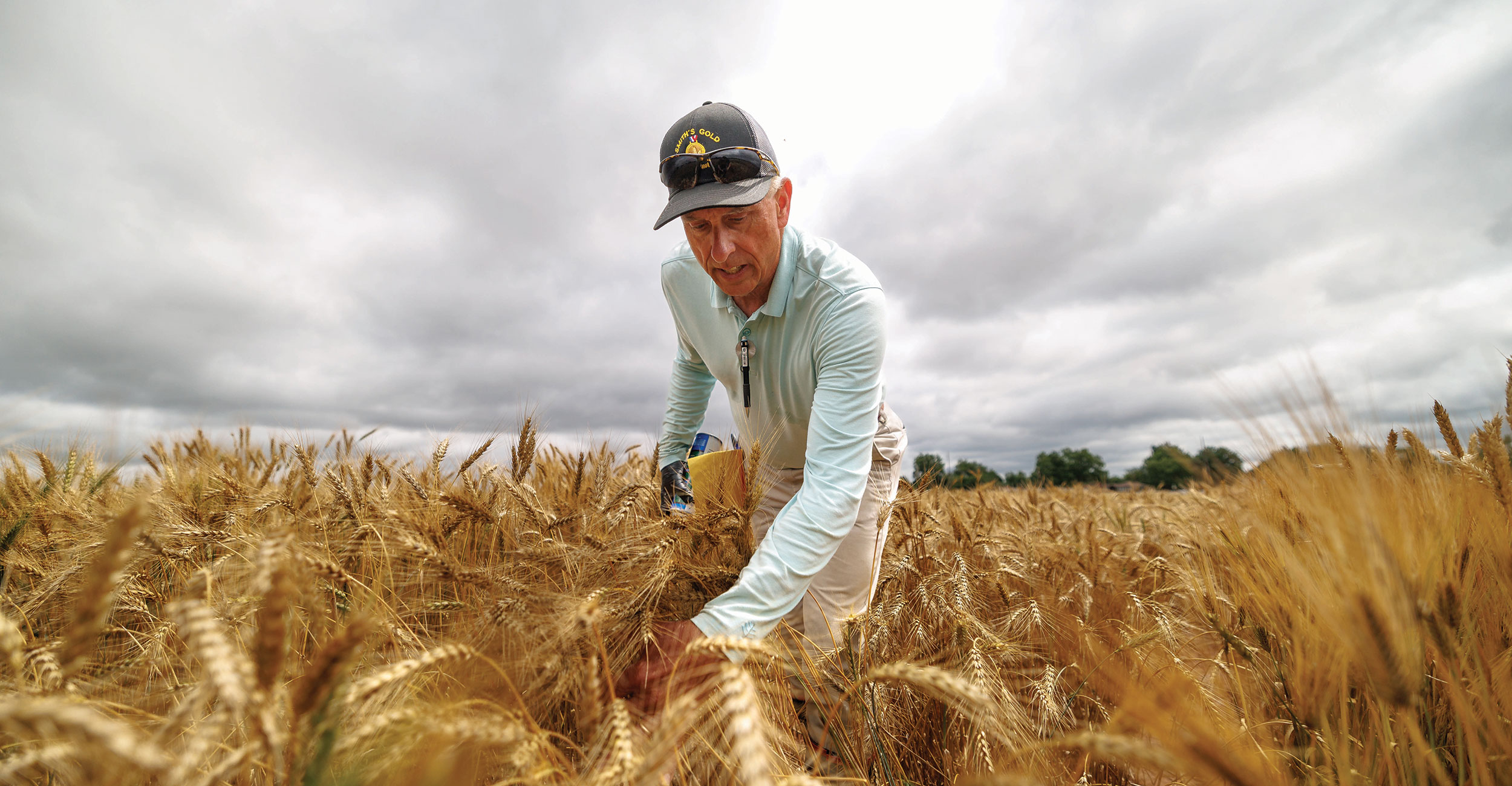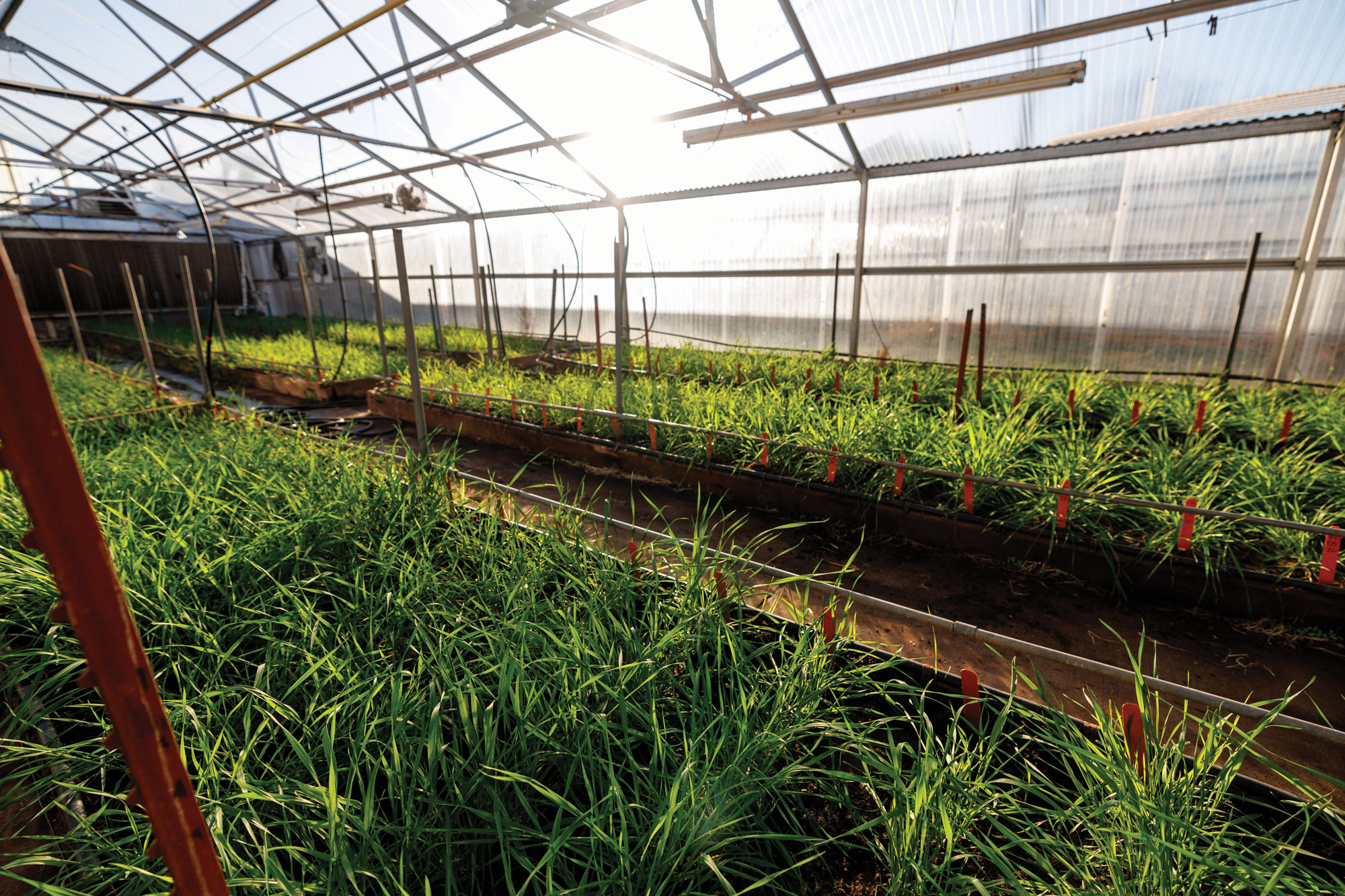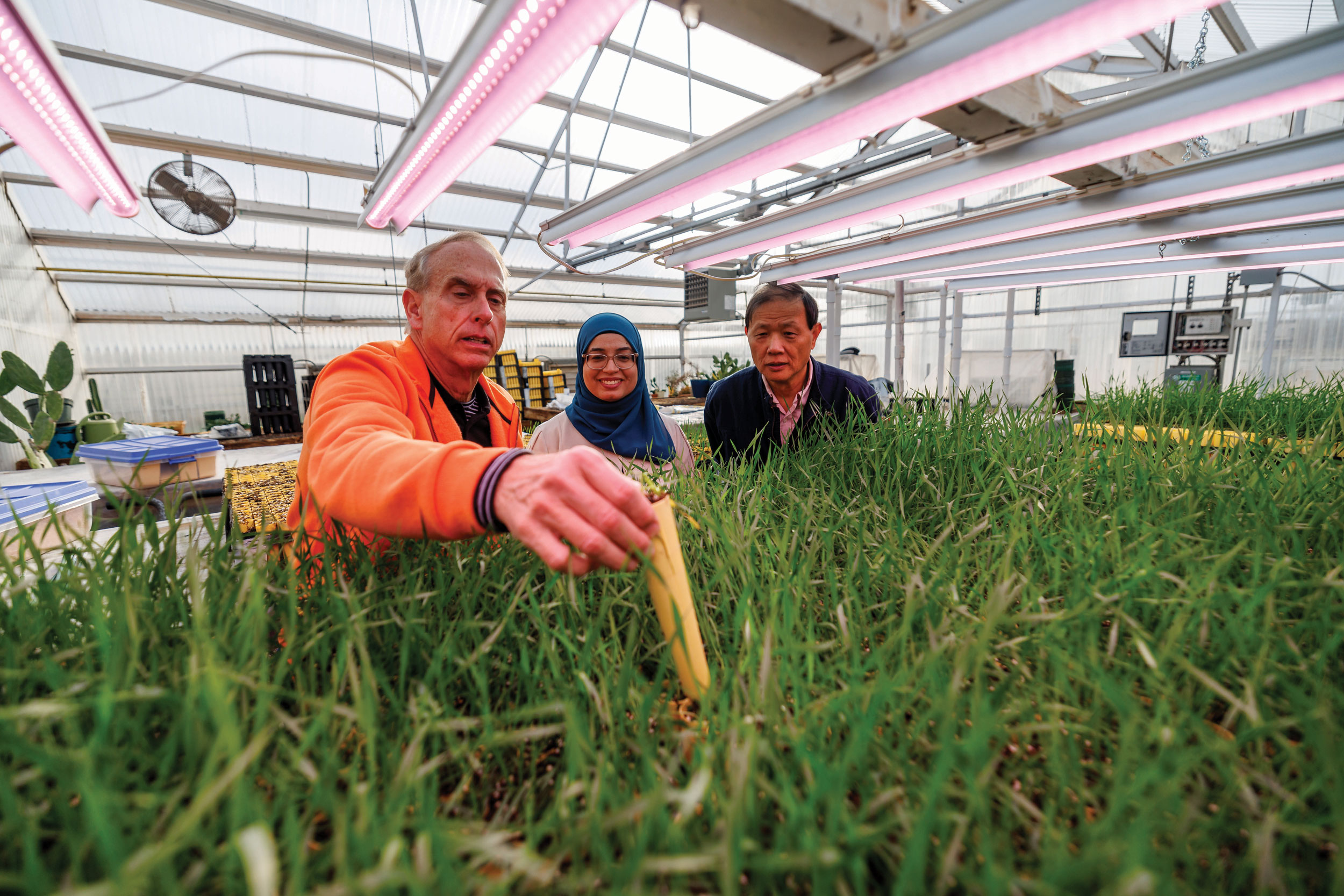
Raising the Grain: OSU Agriculture reinvents wheat for the future
Tuesday, September 9, 2025
Media Contact: Sydney Trainor | Communications and Media Relations Specialist | 405-744-9782 | sydney.trainor@okstate.edu
Wheat is in the air in Oklahoma — in more than just the literal sense.
With over 4 million acres planted in Oklahoma each year and more than $500 million in annual state revenue from grain production, the state’s top crop commodity is a primary topic of conversation in the agricultural sector.
And who is at the forefront of these conversations? Oklahoma State University Agriculture.
“The OSU Wheat Improvement Team has been a cornerstone of innovation and resilience in wheat production, not only across Oklahoma but around the world,” said Dr. Jayson Lusk, vice president and dean of OSU Agriculture. “Their groundbreaking research and collaborative spirit have elevated wheat yields and strengthened food security. Their work exemplifies the land-grant mission, transforming science into real-world impacts.”

Since Plant and Soil Sciences Regents Professor and Wheat Genetics Chair Dr. Brett Carver founded the Wheat Improvement Team 27 years ago, he has become one of the most recognized faces nationwide in the wheat breeding and genetics sector. The team of 10 OSU scientists is dedicated to improving protection against fungal, bacterial and viral diseases, and insect species and improving wheat’s tolerance to drought and low soil pH. The wheat breeding program has commercially released 39 varieties since 2000.
In the past 25 years, OSU Ag Research’s wheat breeding program has kept stripe rust and leaf rust at bay in wheat crops with varieties like Gallagher, Smith’s Gold, Green Hammer, OK Corral and Paradox; created durable dual-purpose wheat with varieties like Endurance, Duster, Gallagher and Doublestop CL+; released varieties that offer tolerance to the grassy weed herbicide Imazamox (Doublestop CL+ and Orange Blossom CL+); and discovered an altered version of what is now one of the most important disease-resistant wheat genes in breeding programs across the world.
OSU’s wheat team hasn’t stopped there.
“We intend to develop more durable genetic packages that offer longer-lasting protection against leaf rust and stripe rust and provide stronger protection against a relatively new nemesis — Septoria nodorum blotch,” Carver said.
Food solution providers
While the team continues to breed stronger wheat varieties, they are taking on the challenge of making wheat an even healthier product and a solution to food industry problems.
In 2012, the WIT began working with a genetic protein called Bx7oe, and the varieties that resulted from this work had a shocking effect. Flour from OSU’s Paradox, Breadbox and Firebox wheat varieties – dubbed OX wheat – provides a high level of dough strength while maintaining flexibility.
“Dough strength and extensibility are important in making bread, and the value of this wheat comes from having a certain level of dough strength that did not previously exist in hard red winter wheat,” Carver said. “We are emphasizing something other than yield without sacrificing yield. There’s an opportunity for everyone in the industry to gain value from this wheat.”
The OSU Wheat Improvement Team has been a cornerstone of innovation and resilience
in wheat production, not only across Oklahoma but around the world.
Use of the wheat flour additive called “vital wheat gluten” has increased over the past 20 years. OSU has partnered with Oklahoma-based Shawnee Milling Company and Farm Strategy, a food supply chain consultant, to research the potential of the three wheat varieties as a natural, flour-based alternative to wheat flour additives.
If they successfully establish OX wheat as a food additive substitute, it could mean an entirely new food commodity system in which wheat producers are established as food solution providers. The WIT continues to study the OX wheat varieties by identifying genetic mechanisms responsible for the OX wheats’ gluten strength.
Tapping into healthier wheat
In recent years, the WIT bred a purple wheat variety with Smith’s Gold and an OSU white wheat called Big Country. The resulting variety contained 20 micrograms per gram of anthocyanins.
Anthocyanins give dark-colored foods, such as blueberries and black beans, their color pigment, and they benefit health by creating antioxidants in the human body. The anthocyanin content in red wheat is about 6 micrograms per gram compared to berries, which have about 20-25 micrograms per gram. Carver hopes to soon release the purple wheat variety to the commercial market.
The WIT is also studying and breeding with two wheat varieties from the United Kingdom and China that are high in arabinoxylan polysaccharides in hopes of increasing fiber in other varieties. The team should have genetically stable high-arabinoxylan experimental lines in the field for testing within two years. The average American consumes 16 grams of fiber per day with the recommended amount being 25 grams.


“We can potentially increase the fiber in wheat by 1 to 3 grams per serving,” Carver said. “If we combine that with other solutions like resistant starch, we could get up to 20 grams of fiber per day without a significant change to our dietary choices.”
OSU wheat breeders and geneticists have continued this groundbreaking research with increasingly out-of-date technology and infrastructure. That’s why OSU Agriculture’s latest initiative is planning and fundraising for the new OSU Agronomy Discovery Center to upgrade OSU’s existing Agronomy Research Station with a new headhouse, 10 research greenhouses and a multipurpose Research and Education Center.
“The new laboratories and greenhouses at the Agronomy Discovery Center will revolutionize OSU’s wheat research and breeding efforts by enabling faster genetic breakthroughs,” said Dr. Scott Senseman, associate vice president of OSU Ag Research.
Photo By: Mitchell Alcala
Story By: Alisa Boswell-Gore| Research Matters Magazine
